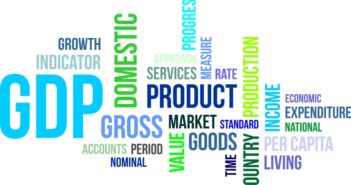- The first estimate for first-quarter GDP growth is expected to show a slowdown amid seasonal factors.
- Slower growth is unlikely to derail the Fed from remaining upbeat on the economy.
- Barring a total shock, the US Dollar is unlikely to lose its upward momentum.
The US publishes its first read of GDP growth for Q1 2018 on Friday, April 27th at 12:30 GMT. The first publication tends to have the most significant impact on markets. Apart from being the first official look at a quarter that just ended, the release can provide significant surprises.
The second, third, and fourth quarters of 2017 saw annualized growth rates around 3%, a substantial rate and above the “new normal,,” the post-crisis averages of 2.0%-2.5%. This time, the consensus of economists points to an annualized figure of 2.3%, down from a final read of 2.9% for the latter quarter of last year.
Slower growth rates are not uncommon for the start of the year. This happened in quite a few of the past few years, the latest being a sub-2% rate in Q1 2017. The weather is often blamed for the dip. Polar vortex storms or cold spells have hamstrung economic activity also in the first quarter of the current year.
Real expectations, sometimes known as the “whisper number” may even be lower. The Atlanta Fed’s GDP Now stood at a mere 2.0% as of April 17th. The highly regarded estimate is contrasted with the New York Fed’s NowCast figure of 2.9%. The Atlanta Fed’s measure runs for longer and carries more weight among market participants.
The components of GDP growth
If the headline figure meets expectations, the composition of growth may take center-stage. The first component to watch is Personal Consumption. The US economy is focused on consumption and robust rises in this motor of growth may outweigh falls elsewhere.
A rise in exports will also be seen positively. It serves as an indicator of broader global growth and will also alleviate pressures on the White House to act against America’s trade partners. Trump’s tariff issues are now on the backburner but have not been resolved.
Growth that originates from government spending may be frowned upon. Congress approved a package of fiscal expenditure that was aimed to please all members, and this may add to growth. However, this kind of growth is not what markets are looking for.
Last but not least, inventories are a double-edged sword. Higher growth rates that are supported by the replenishing of inventories may result in a depletion of inventories in the following quarter. Conversely, if growth is dragged down by inventory drawdowns, markets would shrug it off.
Dollar favorably positioned for the GDP report
The US Dollar is enjoying a broad rally ahead of the publication. US yields of all maturities and especially the benchmark 10-year yields are rising to new multi-year highs. This makes the greenback more attractive. Higher bond yields are based on upbeat economic data and more importantly on the eagerness of the Federal Reserve to raise rates.
Fed officials have expressed optimism about the US economy in recent weeks and have explicitly been upbeat about the chances of reaching the inflation target. Core CPI has indeed reached 2.1%. The Core PCE that the Fed targets, is getting close to this target.
Ongoing upbeat growth is undoubtedly essential in underpinning inflation. Nevertheless, a dip in the initial quarter of the year is taken into account by the central bank. There is a low probability that the Fed Chair Jerome Powell and the more hawkish composition of the FOMC will be deterred by a dip.
Three scenarios for the US GDP and the Dollar reaction
1) Within expectations: 2.0%-2.5%: In this scenario, the full response will also depend on the composition of growth. If there are no outstanding revelations there, the US Dollar will likely keep its upward momentum, gradually gaining ground.
2) Above expectations: 2.6% and above: Similar growth rates to the previous quarters would boost the US Dollar and propel it to higher ground, accelerating the rise.
3) Below expectations: 1.9% or below: A sub-2% growth rate would down the Dollar. However, unless the US economy treads water at sub-1% levels, the adverse effect on the US Dollar will likely be shortlived.
Conclusion
All in all, a slowdown in the US economy is priced in. The Fed’s hawkish stance and rising US yields are likely to continue favoring a stronger US Dollar.
More: US Q1 GDP: Trend looks set to continue – ING
